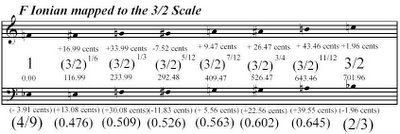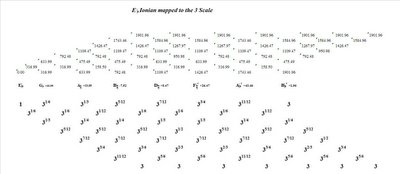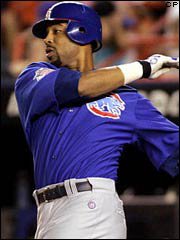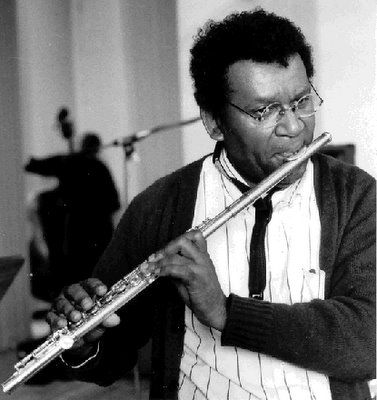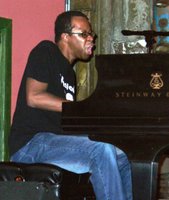 The E Flat Pythagorean Lydian diminished 5 Scale.
The E Flat Pythagorean Lydian diminished 5 Scale.This is a particularly interesting scale for a number of reasons:
This is a Lydian scale that has both an augmented 4th and a diminished 5th. That would be impossible to accommodate in a standard 12-tone equal tempered system because those intervals physically occupy the same space (600.00 cents, the square-root-of-2) as enharmonic equivalents. But just systems - and the Pythagorean system is a 3-limit just system - do not accommodate enharmonic equivalency. The augmented 4th and diminished 5th are different interval classes. The augmented 4th is an otonal interval and the diminished 5th is utonal. (The 729/512 augmented 4th is said to be "otonal" because the integer with the largest prime factor -which happens to be 3- is found in the numerator. The 1024/729 diminished 5th is said to be "utonal" because the integer with the largest prime factor - which is 3 in any Pythagorean system - is found in the denominator).
Another interesting quality of this scale is that the augmented 4th degree is physically "higher" than the diminished 5th. The Pythagorean augmented 4th being 611.73 cents and the Pythagorean diminished 5th is 588.27 cents. This is the first "scale of the day" with an adjacent pair of ascending scale tones that actually descend. This gives this scale a delicious ambiguity.
Also worth noting is that the interval between the augmented 4th and diminished 5th has a frequency ratio of 531441/524288. Which is 23.46 cents wide and is commonly referred to as the Pythagorean Comma. Commas are found between any pair of otonal/utonal intervals that would pass for enharmonic equivalents in equal temperament (such as an augmented 2nd/minor 3rd or major 7th/diminished octave for example). But the Pythagorean Comma is unique in that it forms between intervals that are inversions of one another. It is also an interval of enormous historical significance in intonation theory as the presence of commas pose a dilemma for tuning keyboard instruments or modulating between key centers.
The fact that enharmonic intervals are glossed over as "equivalents" in equal temperament is just a hint of the sense of the otonal/utonal tapestry that is obscured in the drive to suppress or eliminate commas. Subversively, I find these "problem intervals" fascinating and choose to dwell upon them or feature them prominently in my own compositions. The trick is to structure a composition so that commas and other intervallic anomalies fit as a focal point. That requires developing a sonic environment around it and working melodic lines that logically turn upon themselves as such. This allows a composition to orbit around its own inner logic without simply sounding "out of tune."








